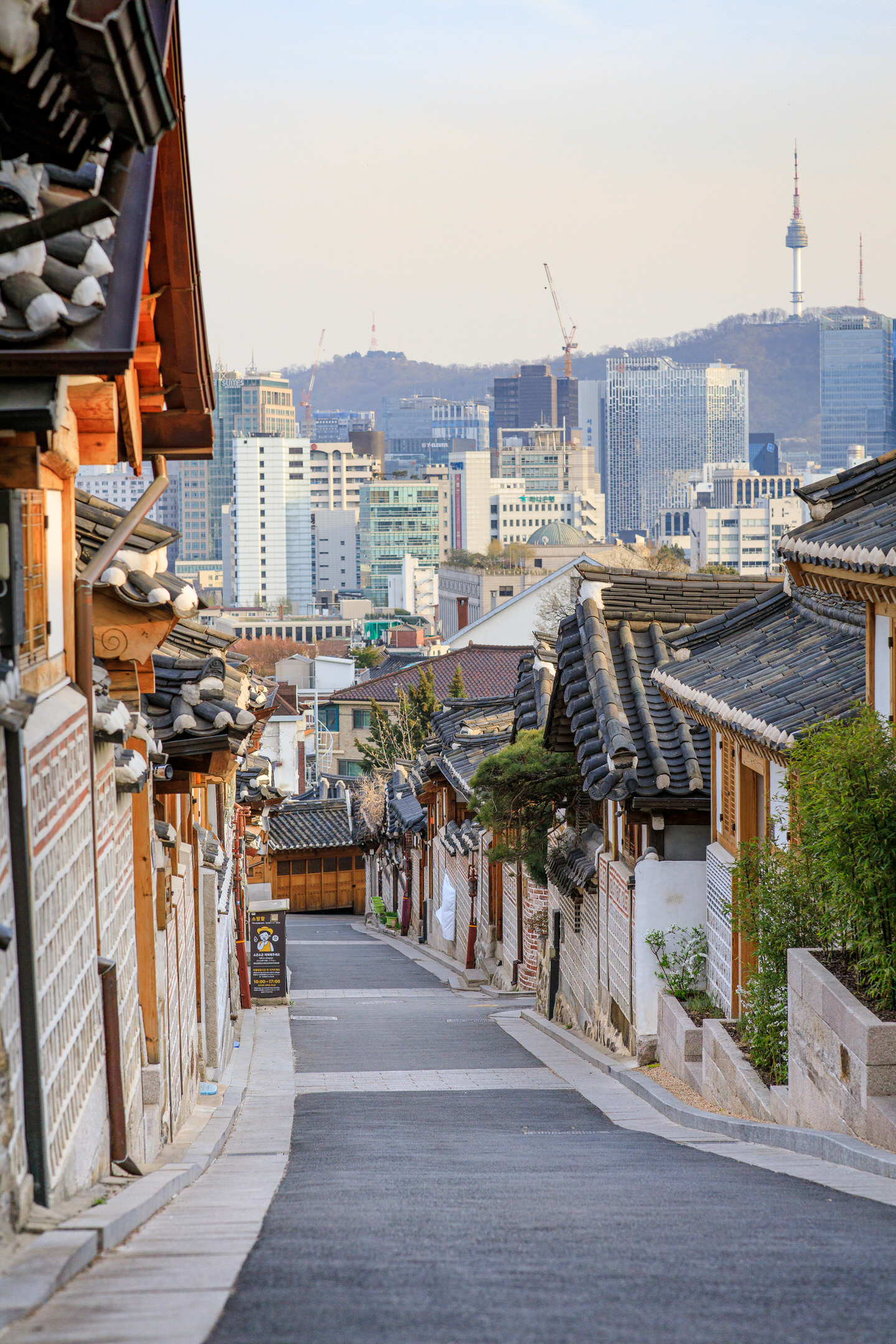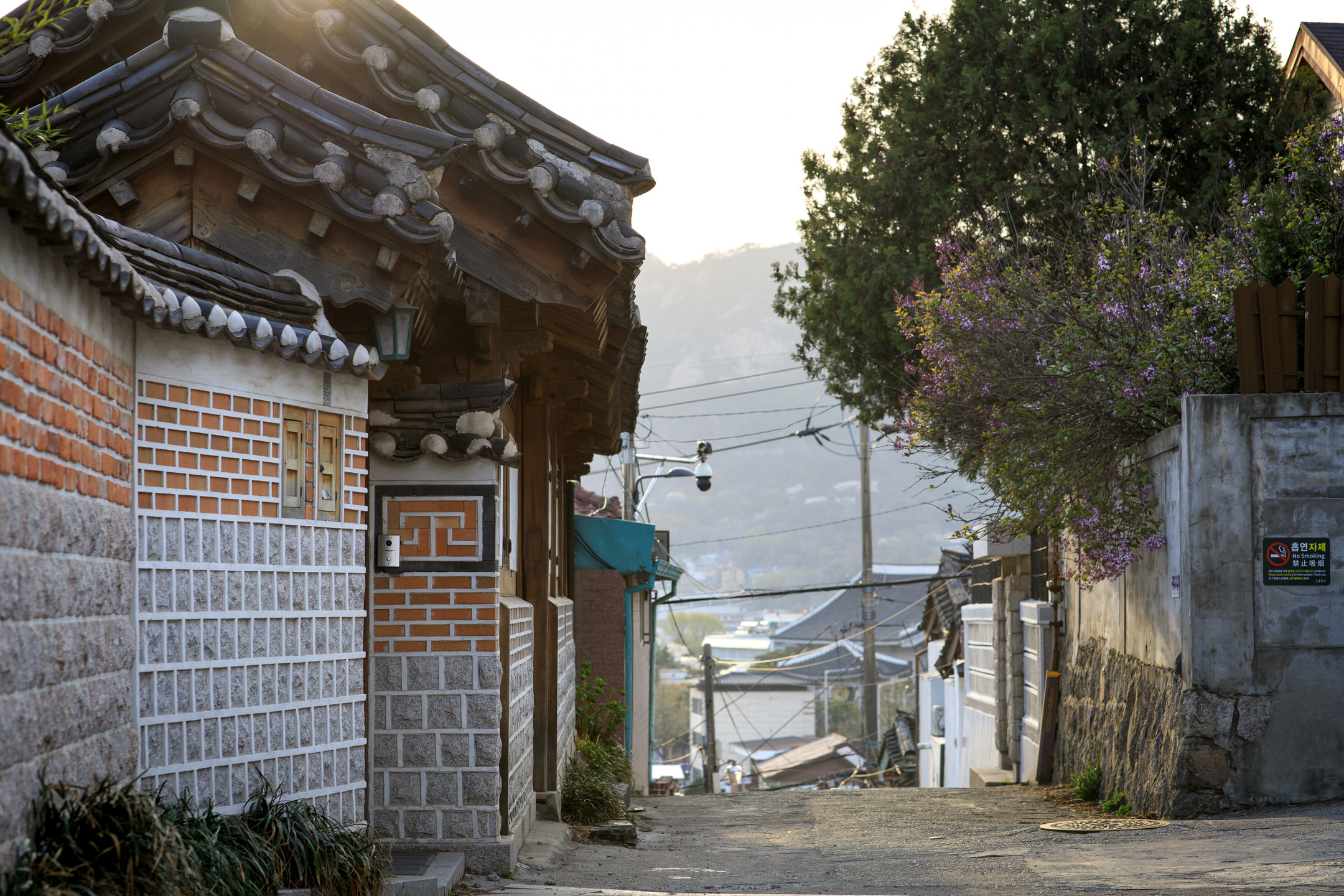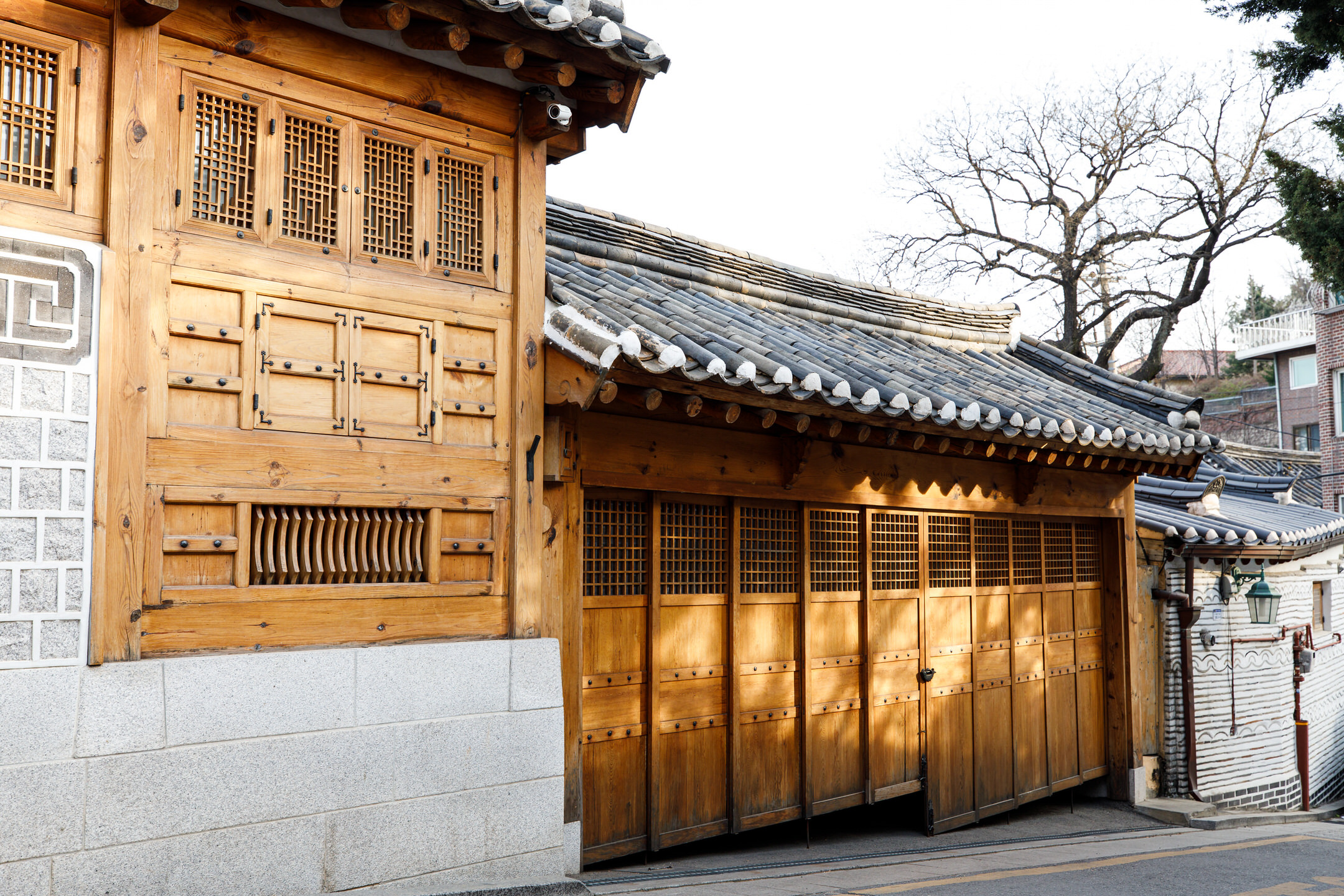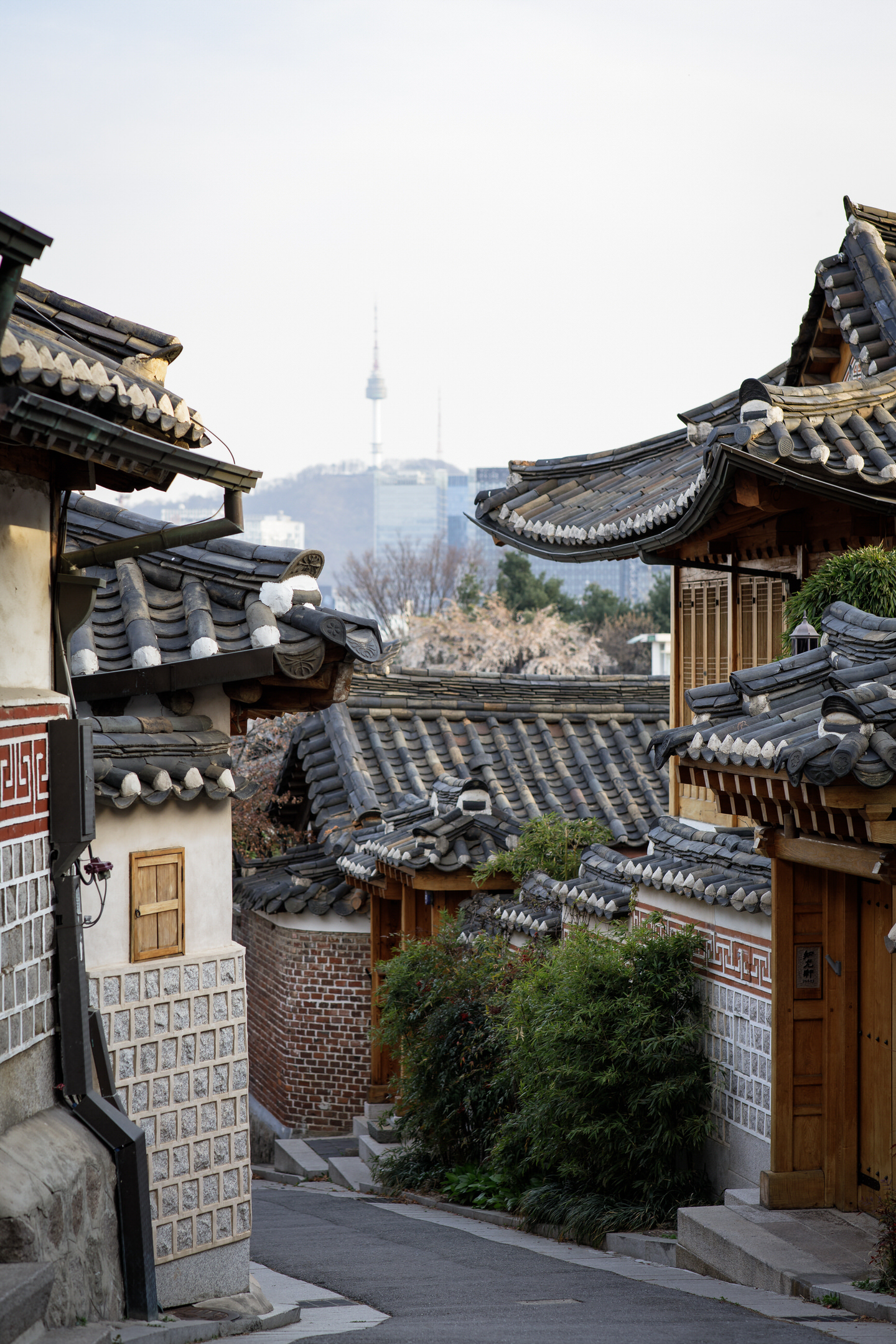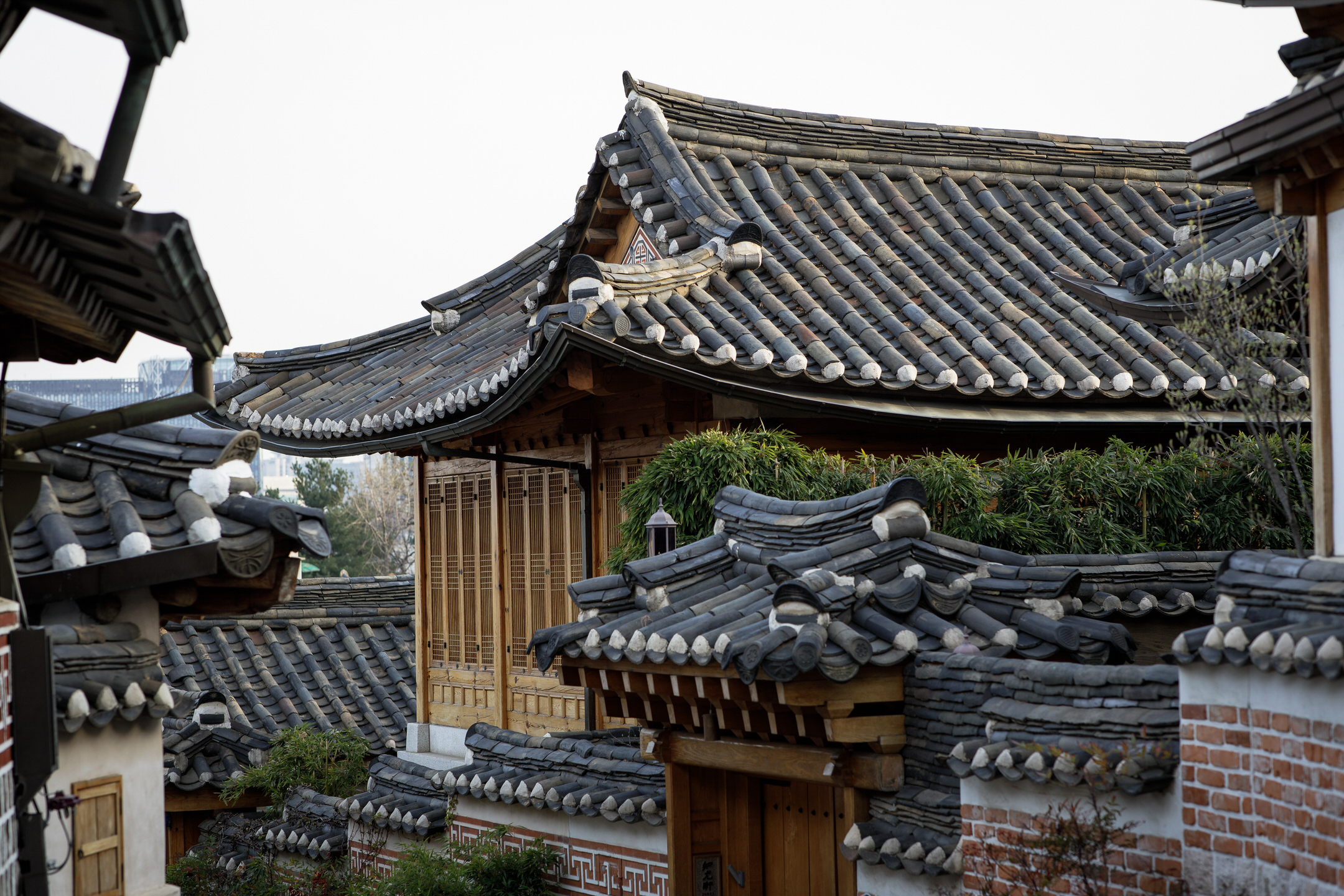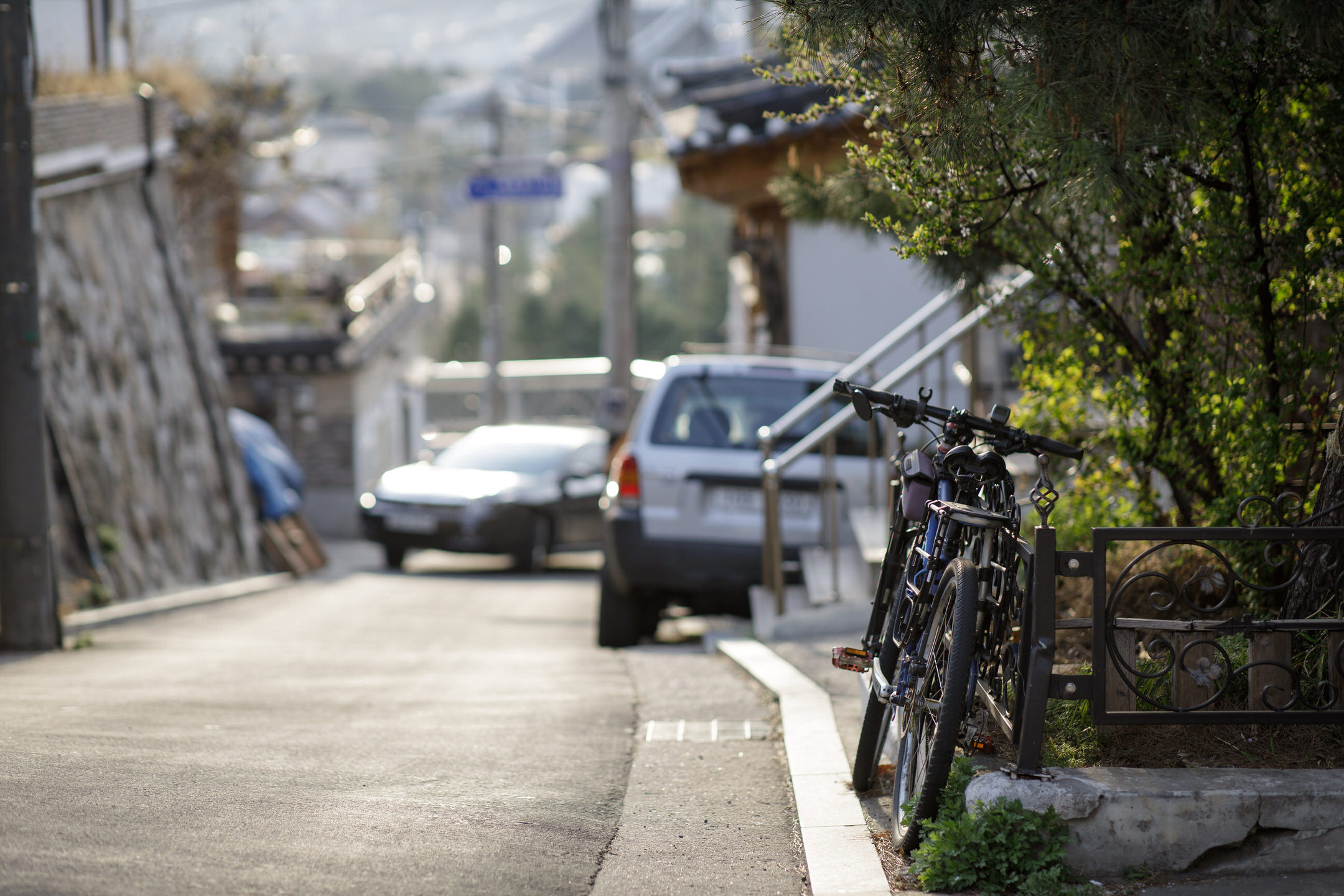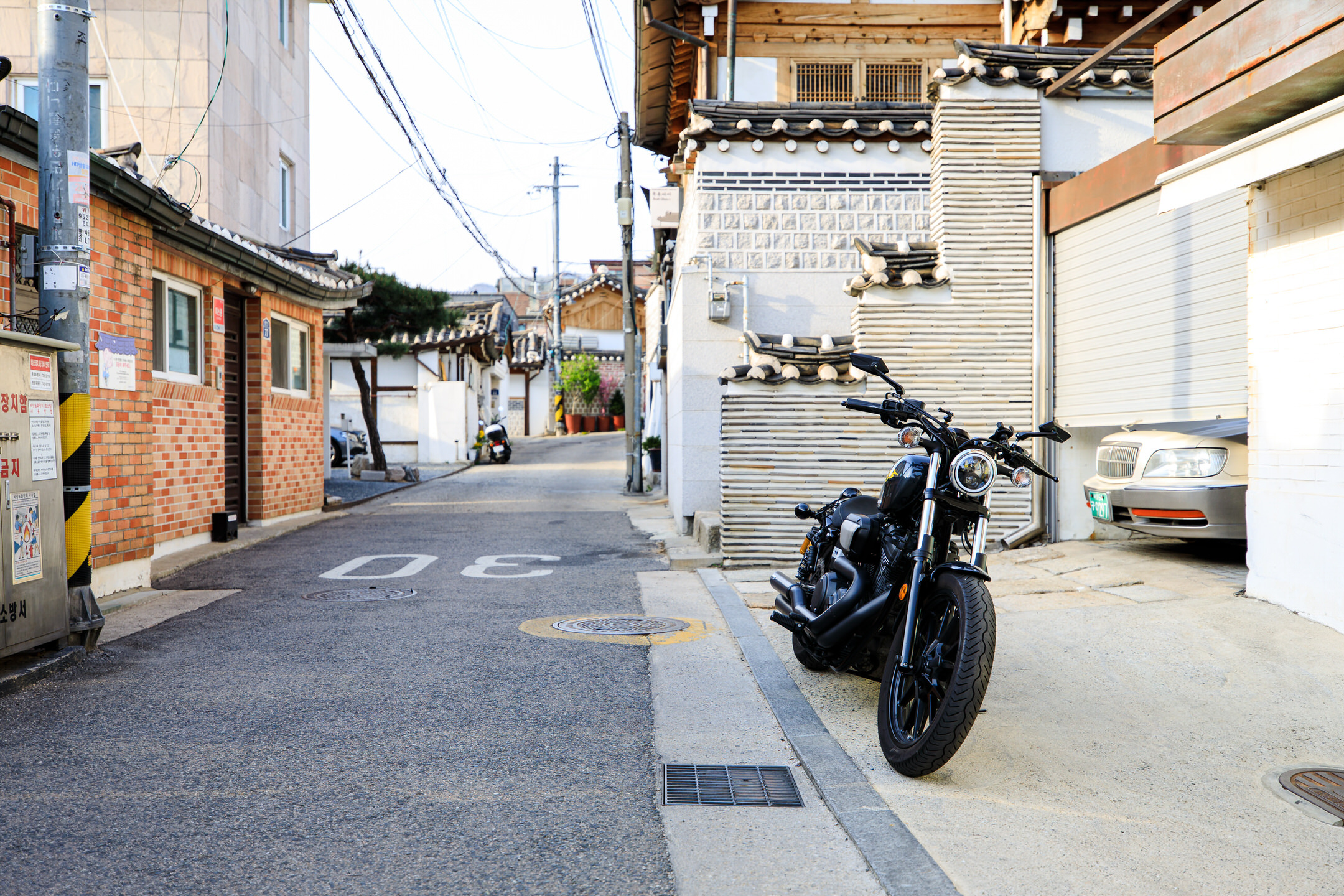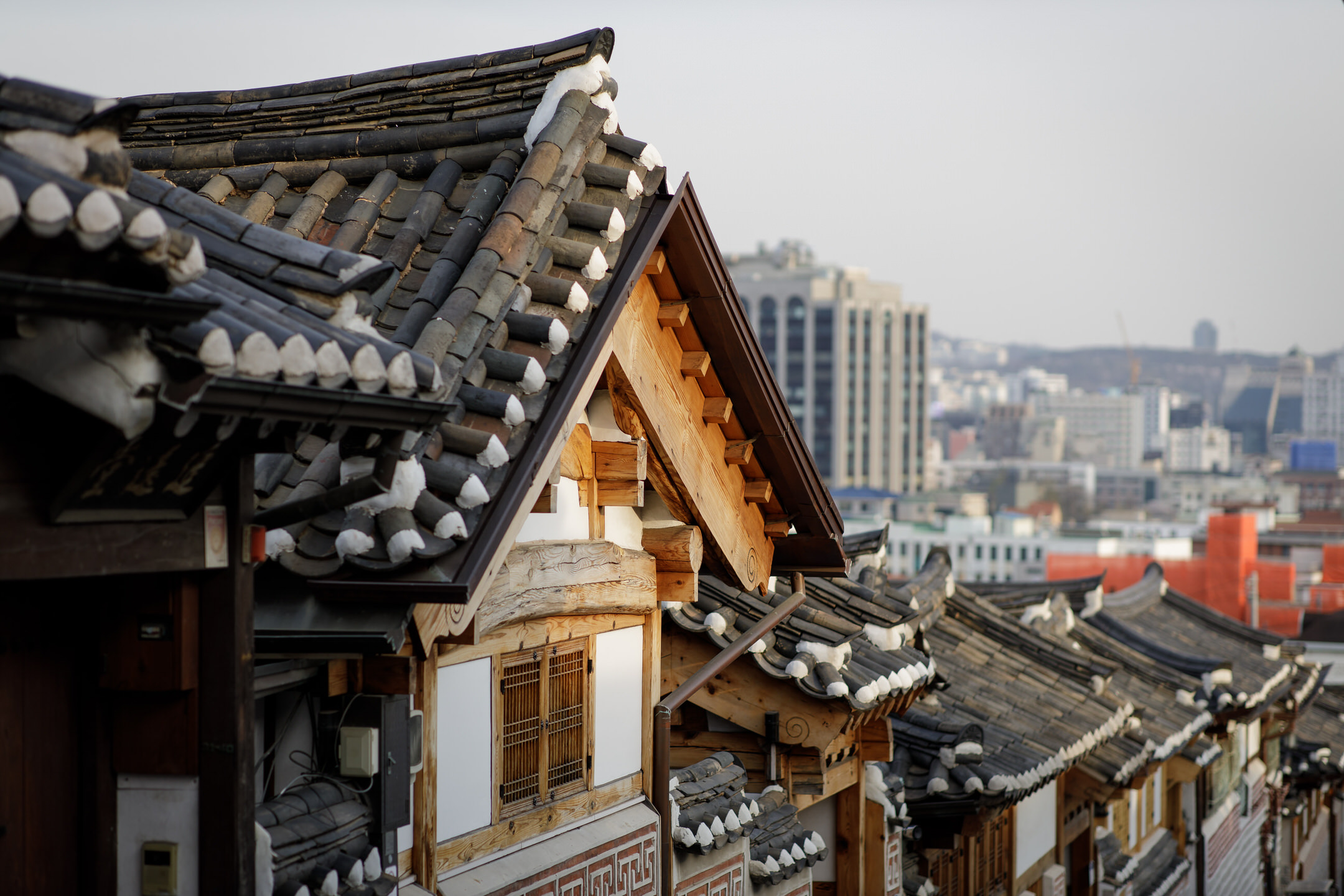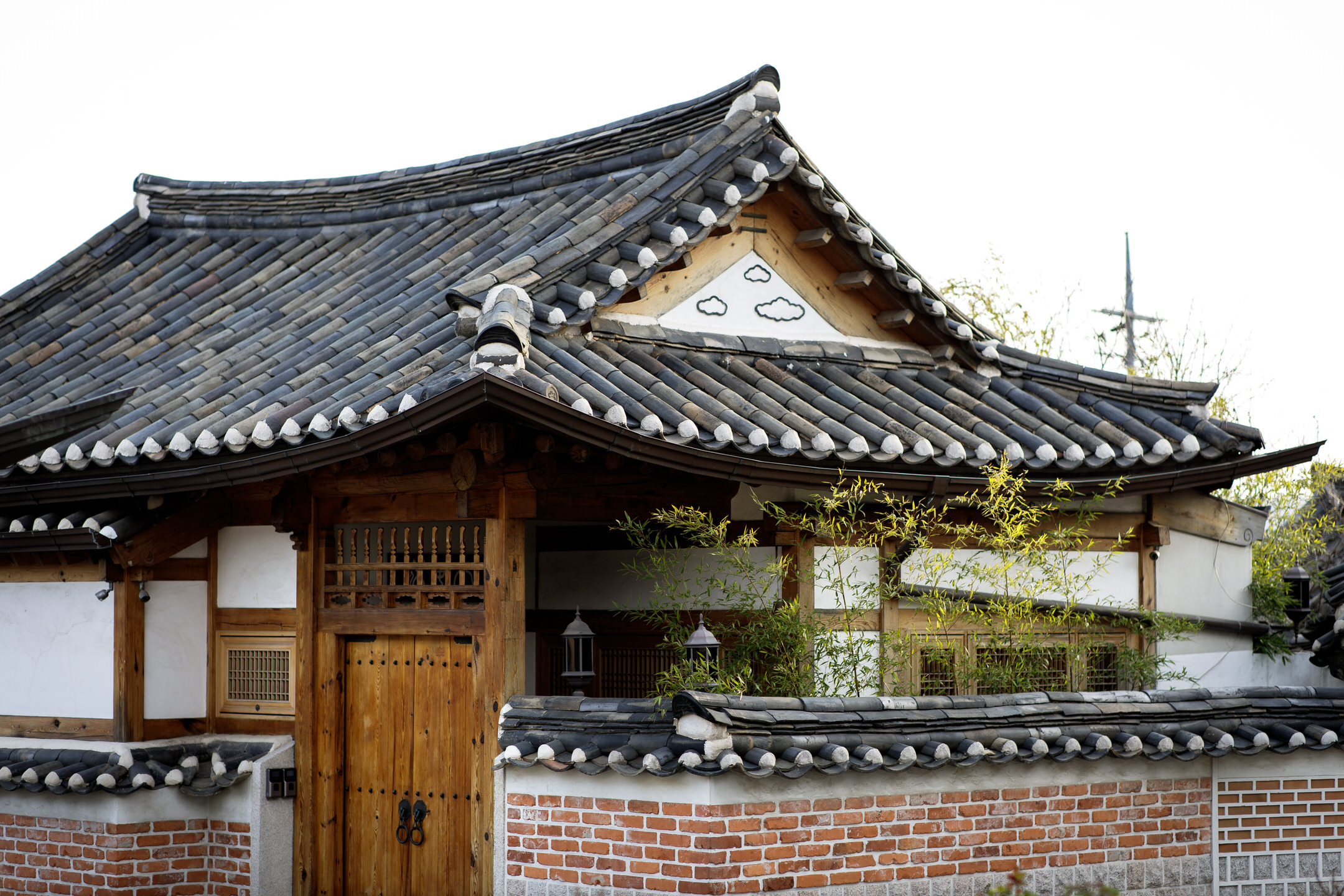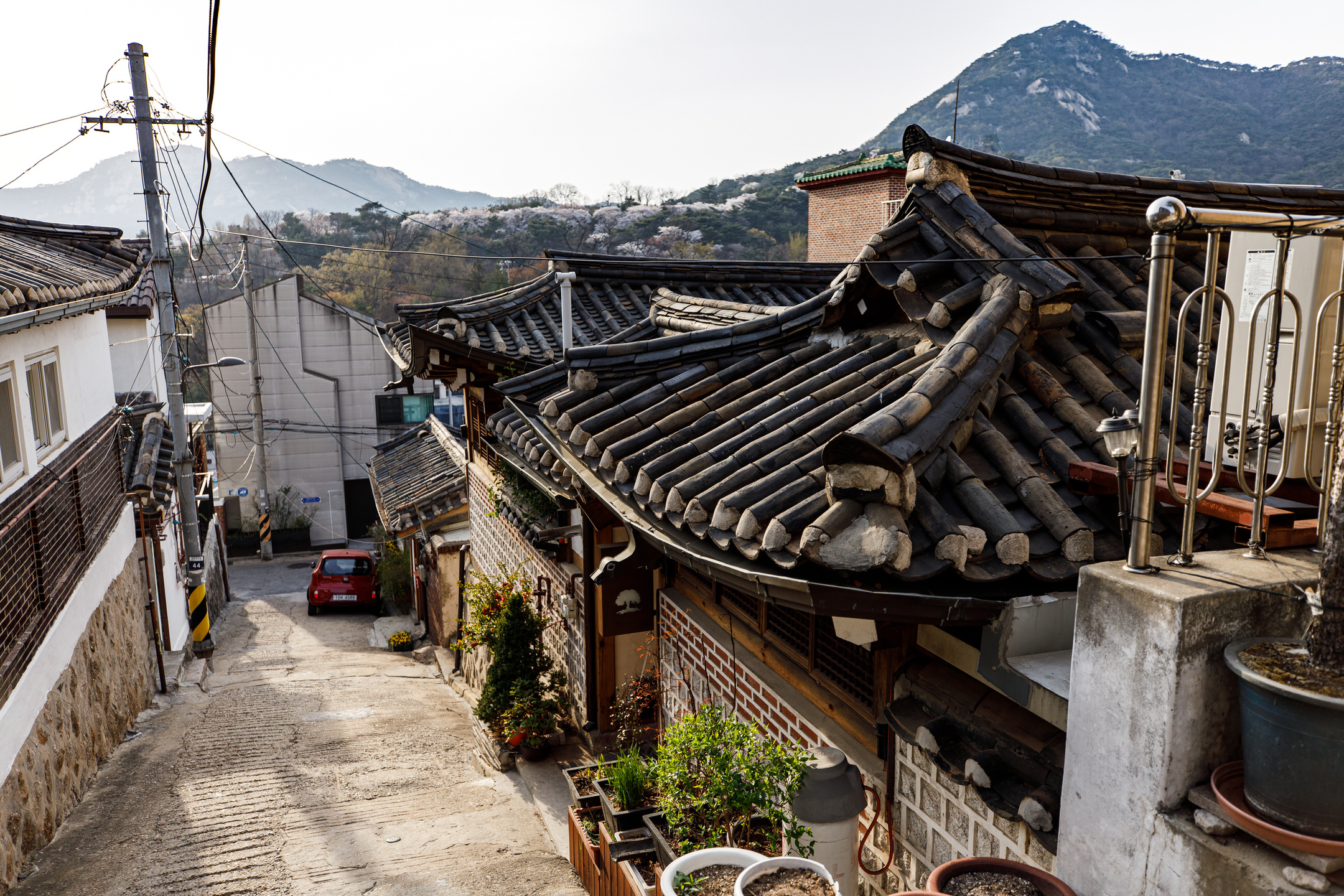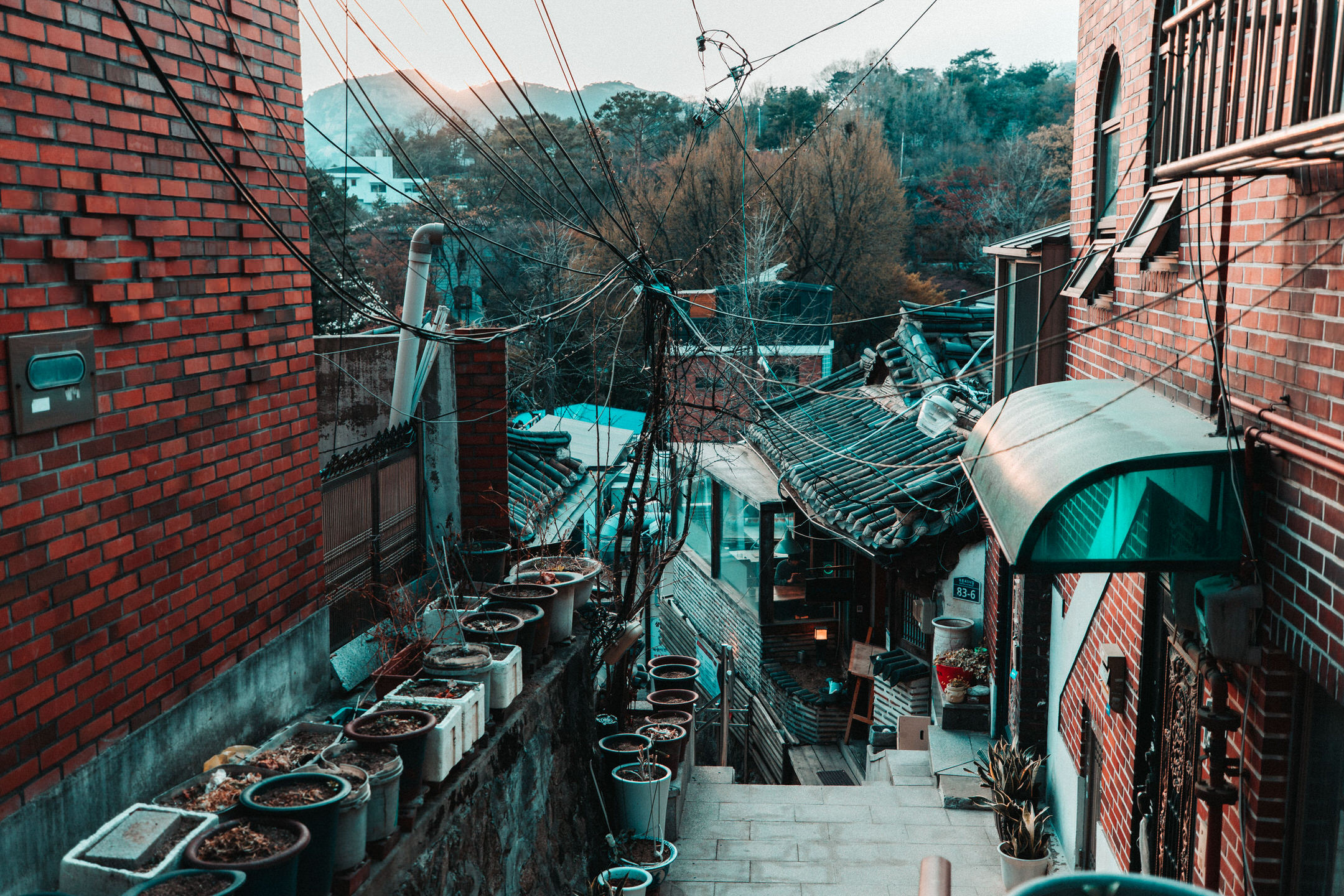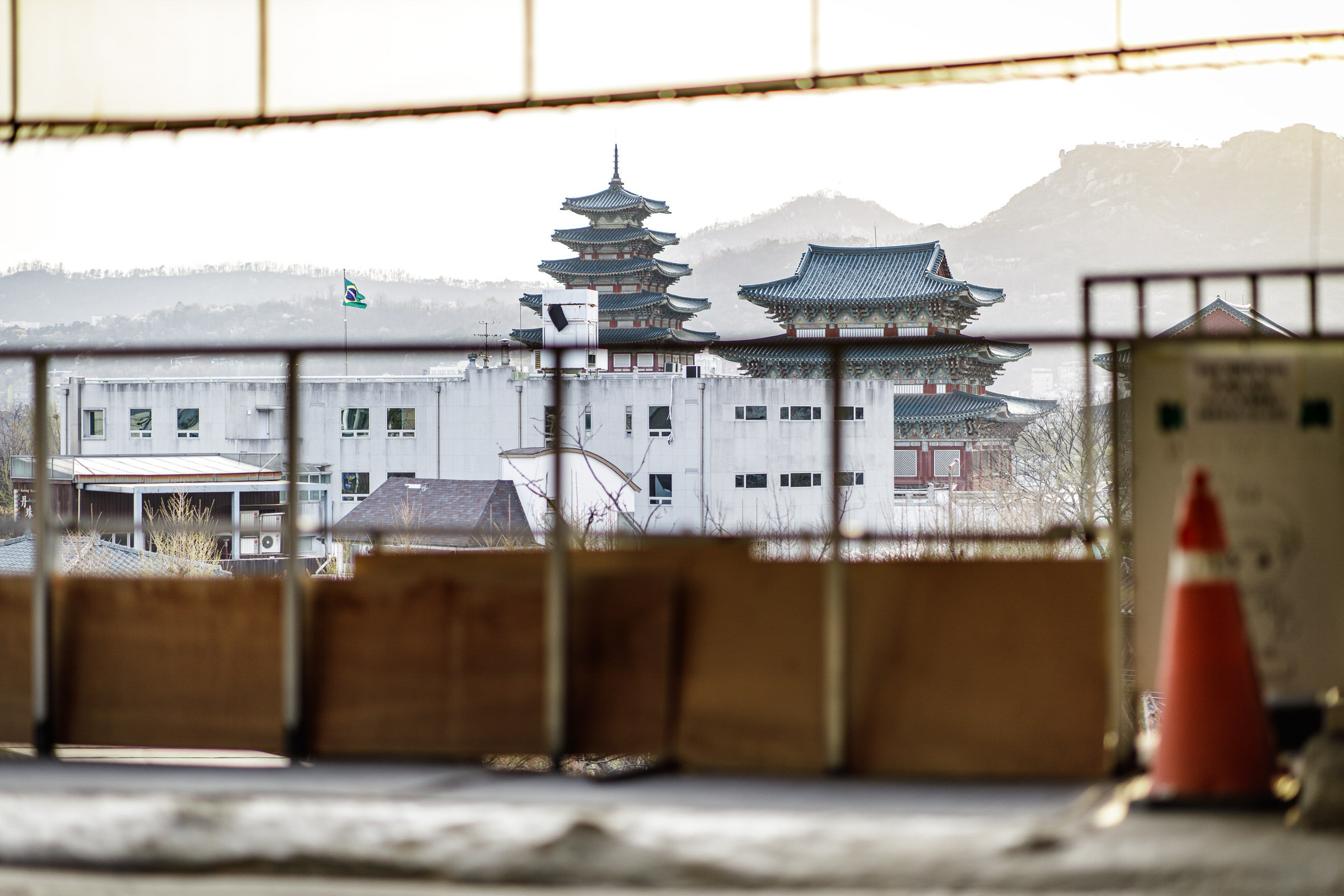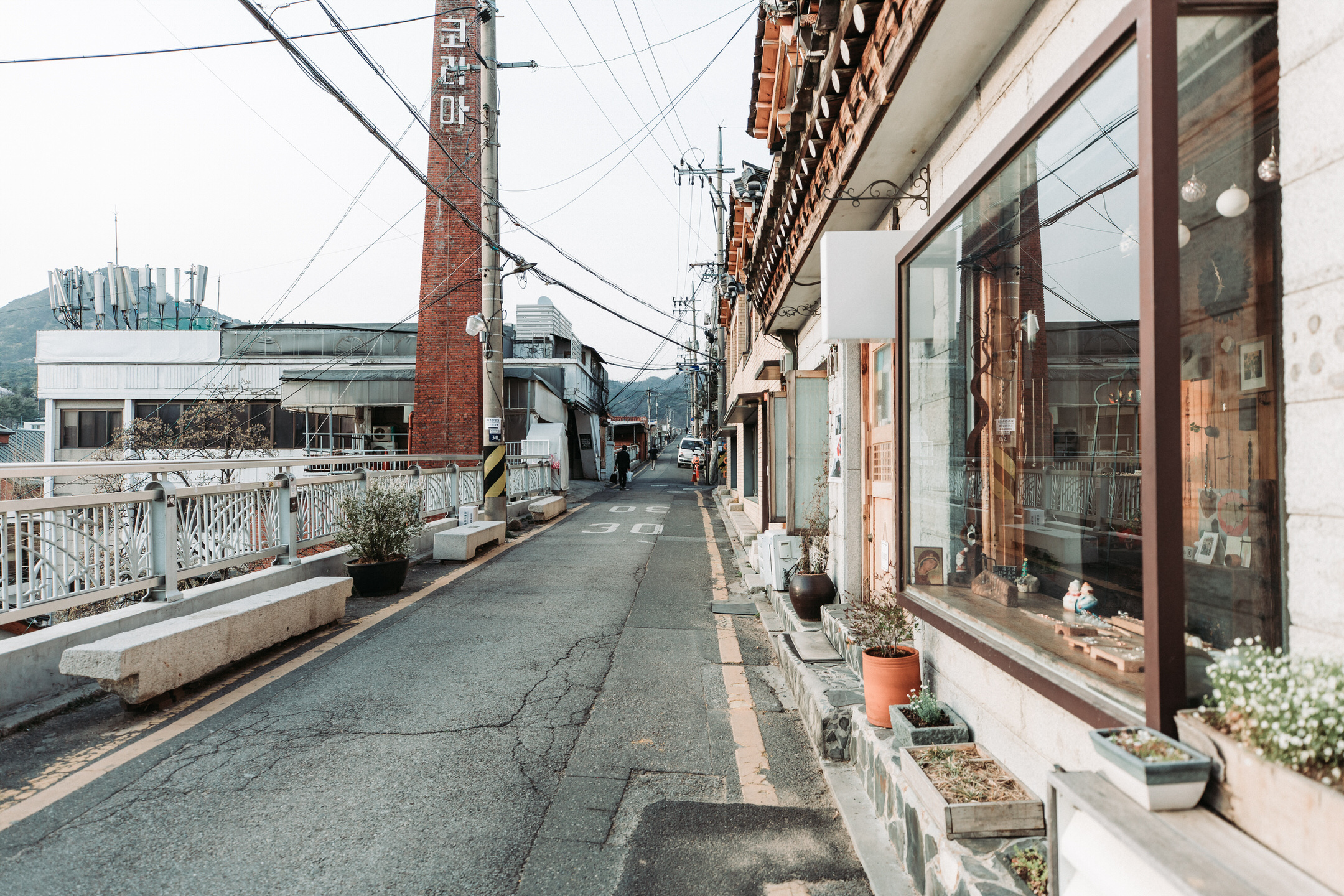Bukchon Hanok Village 🏘
Bukchon Hanok Village (북촌한옥마을), a traditional Korean village home to hundreds of hanok, is located on the top of a hill that lies north of Seoul.
It dates back to the early days of Joseon Dynasty and has been since preserved, so it gives us an idea of what an urban environment looked like 600 years ago. When strolling through its alleys, you may catch a glimpse of the N Seoul Tower (N서울타워) that sits on the top of Namsan Mountain.
Though some of Bukchon Hanok Village traditional houses now operate as museums, art galleries, guesthouses, restaurants and tea houses, it remains to this day a residential area.
Bukchon, or the “northern village”, is located to the north of Seoul between Gyeongbokgung Palace and Changdeokgung Palace. Its traditional houses are mostly built in a rectangle shape to retain heat in the winter, which is quite cold in this part of South Korea.
According to the baesanimsu (배산임수) principle of Korean architecture, an ideal home would be located between a mountain and a river. This way, sheltered by the Bugaksan Mountain, Bukchon traditional houses are less affected by the cold northwestern winter winds.
On the left, the National Folk Museum of Korea, located on the grounds of Gyeongbokgung Palace and topped with a pagoda, is seen from a construction site on the edge of Bukchon.

